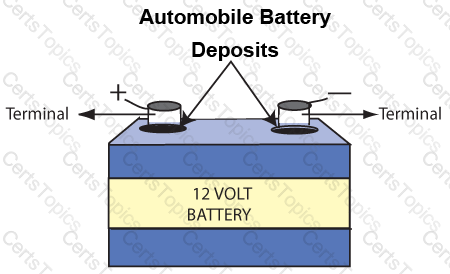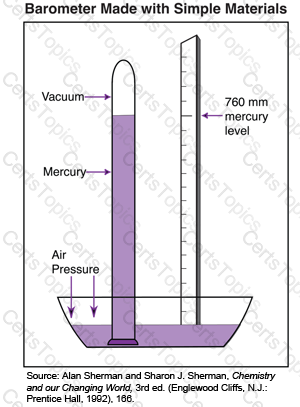Potential energy is stored energy. Kinetic energy is energy of motion. Conduction is the transfer of energy when molecules collide. Convection is the transfer of heat caused by density differences in air.
What type of energy change is demonstrated when a child, starting from the top, goes down a play slide?
The battery of an automobile produces electricity from a chemical reaction. This electricity leaves the battery from a post called a terminal and is used in starting the engine. Sometimes a crusty deposit forms on the terminals, preventing the engine from starting. Simply cleaning off the deposit often restores the battery to operable condition.

Which effect does the deposit have on the battery terminals?
Susan is studying air pressure and makes a simple mercury barometer as shown below. She knows that air exerts pressure. More pressure on the surface of the mercury in the bowl will cause the mercury level to rise. Less pressure will cause the mercury to fall. High barometric pressure is often associated with fair weather, and low barometric pressure is associated with rain.
Susan is enjoying a bright, sunny day when she hears a local weather forecaster predict rain for tomorrow.

When Susan checks her barometer tomorrow, which change is she most likely to note?
Windchill is the rate of heat loss on the human body resulting from the combined effects of low temperature and wind. As wind speeds increase, heat is carried away from the body at a faster rate, thus lowering both the skin temperature and, ultimately, the internal body temperature. Many other factors can affect the impact of windchill, such as type of clothing worn, the amount of flesh exposed, and an individual's physical condition.
Based on the information provided, which of these practices would BEST protect a person from the damaging effects of windchill on a severe day?